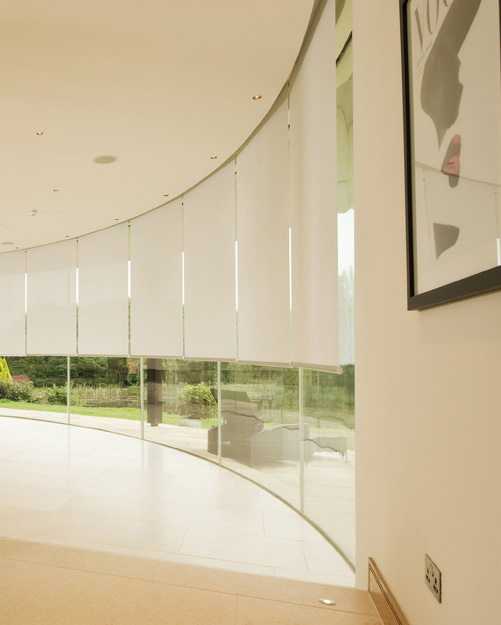
13 Mar Early Blind Planning: A Window of Opportunity
This week, Managing Director Julian takes the Tangram Talk reigns and gives some expert advice on incorporating blind installation into the early stages of architectural planning and design…
Contemporary residential architecture displays a preference for large expanses of glass, allowing the occupiers to enjoy a great outlook and flooding the interior with natural light. However, the cost may be a lack of privacy and the need at times to screen out excess light and heat.

Often, the most versatile and aesthetically pleasing solution to screening such windows is by the installation of roller blinds. Roller blinds are available in a range of sizes and offer fabric and operating options to suit almost any environment.
The key to a successful solution is early planning. Architects and designers should consider window screening as an inherent part of the building design process and not something to be left until the build is complete.

Considerations include:
- How large are the windows or areas of glazing? What size of blind is possible and is there a desire to match blind width to glazing profiles or mullion positions?
- Can the blinds be accommodated at the head of the windows? The ideal solution is usually to include a blind pocket in the ceiling. Can such a pocket be formed free of obstruction from building structure?
- How are the blinds to be operated? Chain operated blinds are now covered by legislation that limits the length and hang of chains. Do the window sizes and framing allow compliance with the regulations?
- Electric blinds are an excellent solution for large areas of glazing. Detailed planning is required to ensure the correctly sized blind pocket and appropriately concealed wiring routes.

Building features that may make the installation or operation of roller blinds unfeasible, or create a far from ideal aesthetic solution, include:
- Glazing profiles that are sloped (it’s surprising how often this issue arises!) Roller blinds only operate if fitted horizontally; glazing with sloped profiles can be fitted with fixed blind panels
- Door handles or other protrusions that foul the drop of the blind. Large sliding glazed panels are usually included in architectural drawings with no note of the handle or operating lever. These handles will often extend beyond the window frame and mean that any blind (and the location of its ceiling pocket) has to be moved further ‘into’ the room
- Windows that tilt inwards, particularly where the window extends outside a reveal or where there is insufficient space above the top of the moving frame to fit a blind (or any other window covering solution)

Moral of the story: seize the opportunity to plan blind specification in the early stages of the architectural process and avoid frustrating functional and aesthetic complications!
Tangram are the largest Silent Gliss residential installer in Scotland and provide a full advisory and consulting service to architects and designers.
